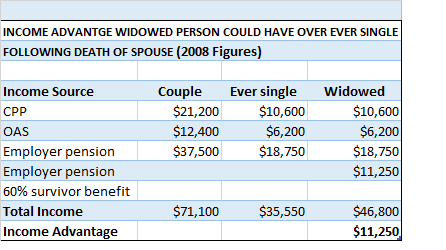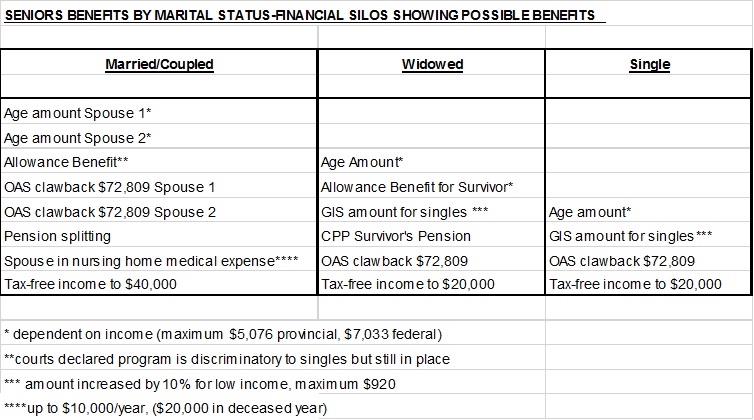‘EMPTY HOUSE SPECULATOR’ SYNDROME EQUALS THEFT AND UNETHICAL INVESTING
(These thoughts are purely the blunt, no nonsense personal opinions of the author about financial fairness and discrimination and are not intended to provide personal or financial advice.) Post updated June 28, 2017.
Garry Marr’s Financial Post May 8, 2017 article “Spectre of empty houses haunts Canada’s two most expensive housing markets” (expensive) states that in Toronto ‘some believe vacant homes exist on a widespread basis, bought up by a stream of investors so consumed by speculation – or just a safe place to park their money – that they can’t even bother to rent out their properties in markets where the going rate can easily top $3 per square foot…..data seems to indicate there were as ‘many as 66,000 vacant units in Toronto in 2016 equivalent to 5.6 per cent of the city’s total stock of 1.2 million private dwelling units’. If one calculates this based on a family of four one could guess that about 16,500 families are missing out on Toronto housing. But wait, the article goes on to say that of the empty homes, 90 per cent are condos or apartments. If condos and apartments are more likely to be bought/rented by singles and poor families, then this would mean singles and poor families are more likely to be hurt by the empty units and Toronto housing crises.
Matt Levin’s Los Angeles Daily News May 13, 2017 ‘Amid state housing crisis, why 2 out of 5 millennials still live at home’ (millennials) article states ‘State lawmakers have introduced more than 130 bills this legislative session to try to solve California’s housing affordability crisis, proposing everything from 150 square-foot apartments to a $3 billion affordable housing bond’. ‘Nearly a decade removed from the depths of the Great Recession, a staggering 38 percent of California’s 18 to 34-year-olds still live with their parents, according to U.S. Census data. That’s roughly 3.6 million people stuck at home. If “unlaunched” California millennials formed their own state, they would be entitled to more electoral votes than Connecticut, Iowa or Utah. If they formed their own city, it would be the third largest in the country’. California’s population is slightly larger than Canada’s population.
‘Huge demand for tiny rental units in Vancouver’, by Bruce Constatineau in 2014 (rental) talks about a 100-square-foot unit for $570 a month and there’s a waiting list of people wanting to rent other units when they become available. In another development there are units as small as 90 square feet where each unit contains a tiny sink and fridge (no cooking facilities and windows?).. Renters in the 50 units share 11 bathrooms, and there are laundry facilities on each of the four floors. Apparently the mini-sized apartments attract a wide range of renters — from ages 19 to 56 — who want to live on their own with a downtown Vancouver address. Budget-minded renters…..can find similar-sized or even smaller cubbyholes downtown for anywhere between $400 and $600 a month. It is further stated than In order to make them affordable, they need to be very small, condensed units with shared washrooms. That’s just a fact of life. Really? The pictures of these units speak a thousand words.
Edmonton, Alberta is also considering construction of 100 square foot units.
Empty house speculator syndrome is equivalent to unethical investing and theft since the empty units have been taken off the market and are not available for occupancy. Ethical investing excludes chocolate companies that use child labor. Children are taught it is wrong to ‘take candy from babies’, shoplifters are jailed for minor thefts and yet it appears to be okay for speculators to ‘steal’ housing all within legal limits of the law. The present housing market is based on greed. Greed begets greed and greed trumps family values. In housing singles are worth less than other members of the family unit. The bar has now been reset to a new low where it is okay for them to live in spaces equivalent in size to two jail cells (average jail cell is 45 square feet and provides ‘free’ accommodation and meals, but you can’t leave).
The complete disregard of the housing crisis is heightened by Dr. Ben Carson, head of the Department of Housing and Urban Development USA, who states poverty is a “state of mind” and Trumpian politics which rob the poor to pay the rich. Liberals and Conservatives in Canada are no different. The housing crisis is not a “state of mind”, but rather has been brought on by inadequate rules and regulations on housing, failure to increase the minimum wage to a living wage and the upper middle classes and wealthy paying less and getting more for housing and tax loopholes.
Housing is a basic human right as determined internationally in the “Universal International Declaration of Human Rights” and “International Covenant on Economic, Social and Cultural Rights” and is one of the principles of Maslow’s Hierarchy of need. In Canada there appears to be no shame in robbing singles, poor families and indigenous people of their housing. Housing investors, politicians and families need to take a look in the mirror and reset their moral and ethical compasses to ‘true North’ re housing crisis.
LESSONS THAT SHOULD/COULD BE LEARNED
Where are the parents of millennials? How can they allow the housing crisis and their children to be housed in 90 square foot units and smaller? Where are the family values for housing?
Where are the governments, politicians and city counsels that have allowed the housing crisis to take over and last so long? Where are the rules and regulations to prevent the building of ridiculously small units with price gouging rents?
Why do singles, who are more likely to live in small spaces, always have to pay more per square foot, sometimes outrageously so ($570 for 100 square foot unit)? The upside-down pricing of housing (affordable-housing) where the smaller the space, the higher the price is per square foot needs to stop. Doubling the price on rent equals pure greed and unethical investing. Why do the upper middle class and wealthy pay so much less per square foot for their housing? The estimate for the amount of house taxes, etc. that is collected by not making the wealthy pay their fair share per square foot must be astounding.
How do occupants of these small spaces learn life lessons, such as cooking for themselves, buying food and managing finances?
The minimum wage needs to be raised to an indexed living wage (cause-and-effect-of-financial-policies). Building affordable housing will not solve the problem if the minimum wage is not raised.
Humane principles-there are many humane associations and principles related to animals, so where are the humane principles for humans re housing – 100 sq. ft. at $570 rent is not humane.
Where are the rules and regulations on how small a space can be developed, such as a minimum of 350 square feet, so at least there can be a bathroom and cooking facilities within the unit? Surely, there must be point where it is is not financially feasible for developers to develop small units with minimum square footage in relation to the cost of building the unit and also provides dignity to occupants of these units.
Alberta Health Minimum Housing and Health Standards (Housing-Minimum) – the following condensed excerpt provides information on some Alberta standards for housing.
Space for Sleeping purposes (overcrowding): The owner of a housing premises shall not permit it to become or remain overcrowded. (a) A housing premises shall be deemed to be overcrowded if: (i) a bedroom in it has less than 3m2 (32ft2)of total floor area and 5.6m3 (197ft3) of air space for each adult sleeping in the bedroom, (ii) in the case of a dormitory, the sleeping area in the dormitory has less than 4.6m2 (49.5ft2) of floor space and 8.5 m3 (300ft3) of air space for each adult sleeping in the sleeping area, or (iii) a habitable room in it that is not a bedroom but is used for sleeping purposes in combination with any other use has less than 9.5m2 (102ft2) of floor space and 21.4m3 (756ft3) of air space for each adult sleeping in the habitable room. (b) For the purposes of calculating this section, a person who is more than 1 year of age but not more than 10 years of age shall be considered as a July 20, 1999 9 Revised June 30, 2012 Alberta Health Minimum Housing and Health Standards © 1999–2012 Government of Alberta 1/2(one half) adult and a person who is more than 10 years of age shall be considered as 1 adult; (c) This section does not apply to a hotel/motel.
Food Preparation Facilities: (a) Every housing premises shall be provided with a food preparation area, which includes: (i) a kitchen sink that is supplied with potable hot and cold water and suitably sized to allow preparation of food, washing utensils and any other cleaning operation; and (ii) cupboards or other facilities suitable for the storage of food; and (iii) a counter or table used for food preparation which shall be of sound construction and furnished with surfaces that are easily cleaned; and (iv) a stove and a refrigerator that are maintained in a safe and proper operating condition. The refrigerator shall be capable of maintaining a temperature of 4 degrees C. (400F). (b) Shared Kitchen Facilities Occupants of a housing premises with more than one dwelling may share food preparation facilities provided that: (i) the food preparation facilities are located in a common kitchen room, (ii) the occupants have access to the common kitchen room from a public corridor without going outside the building, (iii) the common kitchen room is located on the same floor as, or on the next storey up or down from the floor on which the dwelling unit is located, July 20, 1999 10 Revised June 30, 2012 Alberta Health Minimum Housing and Health Standards © 1999–2012 Government of Alberta (iv) the food preparation facilities shall not serve more than eight persons, and (v) the refrigerator shall provide a minimum volume of two cubic feet of storage for each intended occupant.
Washroom Facilities: Except where exempt by regulation, every housing premises shall be provided with plumbing fixtures of an approved type consisting of at least a flush toilet, a wash basin, and a bathtub or shower. (a) The washbasins and bathtub or shower shall be supplied with potable hot and cold running water. (b) The wash basin should be in the same room as the flush toilet or in close proximity to the door leading directly into the room containing the flush toilet. (c) All rooms containing a flush toilet and/or bathtub or shower shall be provided with natural or mechanical ventilation. Shared Washrooms (d) Occupants of a housing premises with more than one dwelling unit may share a flush toilet, wash basin and bathtub or shower provided that: (i) the occupants have access to the washroom facility without going through another dwelling or outside of the building; and (ii) the facility is located on the same floor as, or on the next storey up or down from the floor on which the suite is located; and (iii) each group of plumbing fixtures (toilet, washbasin, bathtub or shower) shall not serve more than eight persons.
(This blog is of a general nature about financial discrimination of individuals/singles. It is not intended to provide personal or financial advice.)






